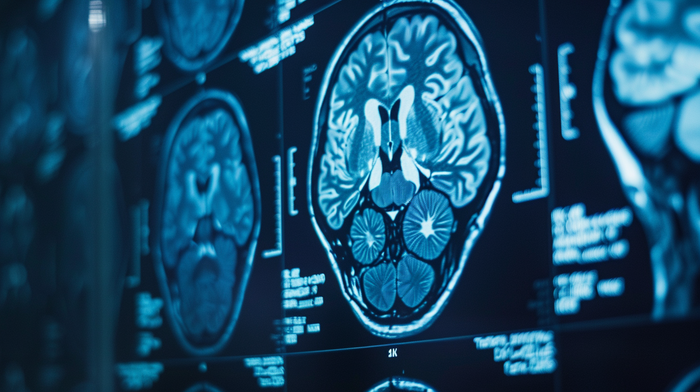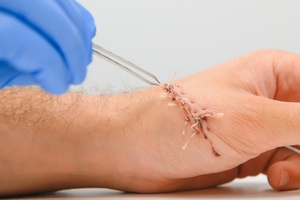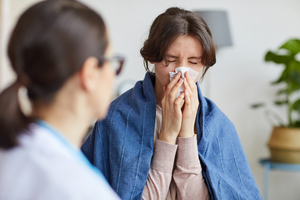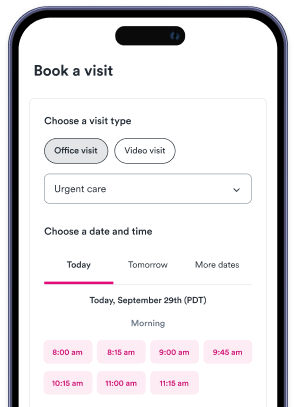Key points
- Brain strokes occur when blood supply to the brain is obstructed or a blood vessel ruptures, requiring immediate medical attention.
- Strokes can be ischemic, hemorrhagic, or transient ischemic attacks, each with distinct characteristics and treatment approaches.
- Stroke symptoms include sudden numbness, confusion, speech problems, vision issues, dizziness, and severe headache.
- Stroke prevention involves managing risk factors, maintaining a healthy lifestyle, and regular medical check-ups.
- Diagnosis of a stroke involves medical history assessment, physical examination, and imaging tests, and treatment varies depending on the type of stroke, with rehabilitation being a key part of recovery.

What Is a Stroke?
A stroke is known as a brain attack. It occurs when something (usually a blood clot) blocks the blood supply to part of the brain or when a blood vessel in the brain bursts, according to the NIH. This interruption of blood flow can cause brain cells to become damaged or die, leading to serious health consequences. Strokes require prompt medical attention and can have long-lasting effects on a person's health and well-being.
What Are the Types of Stroke?
There are generally three main types of strokes according to the NIH: ischemic stroke, hemorrhagic stroke, and transient ischemic attack (TIA). Ischemic strokes occur when a blood clot blocks a blood vessel in the brain, while hemorrhagic strokes result from a weakened blood vessel that ruptures and bleeds into the surrounding brain tissue. Transient ischemic attacks, or “TIAs” are often referred to as "mini-strokes” and are caused by a temporary clot. Each type of stroke has distinct characteristics and may require different stroke treatment approaches.
Is a Stroke the Same as an Aneurysm?
While both strokes and aneurysms are related to the blood vessels in the brain, they are not the same, according to the CDC.
A stroke occurs when the blood supply to part of the brain is interrupted or reduced, leading to damage or death of brain cells. This can happen due to a blockage in a blood vessel (ischemic stroke) or bleeding into the brain (hemorrhagic stroke). On the other hand, an aneurysm is a bulge or ballooning in a blood vessel caused by a weakened vessel wall. If an aneurysm ruptures, it can lead to a hemorrhagic stroke. However, not all strokes are caused by aneurysms, and not all aneurysms result in strokes, according to the CDC. Both conditions require medical attention and may have serious health implications, but they are distinct in their causes and effects.
What Are the Symptoms of a Stroke?
The symptoms of a stroke can vary depending on the type and severity of the stroke, according to the CDC — but common signs include the following:
- Sudden numbness or weakness in the face, arm, or leg, especially on one side of the body
- Sudden confusion
- Trouble speaking, including slurred speech
- Trouble understanding speech
- Difficulty seeing in one or both eyes, including blurred, blacked out, or double vision
- Dizziness or feeling lightheaded
- A severe headache, that may or may not be accompanied by severe nausea, vomiting, and a change in consciousness
It's crucial to recognize these symptoms and seek immediate medical attention, according to the NIH. They note that rapid intervention can greatly improve the chances of recovery.
How Can I Prevent a Brain Stroke?
Preventing a brain stroke involves managing various risk factors, such as high blood pressure, high cholesterol, and diabetes, according to the NIH. Lifestyle modifications, including maintaining a healthy diet, regular exercise, avoiding smoking, and limiting alcohol consumption, also play a significant role in reducing the risk of stroke.
Additionally, it's important to be aware of any underlying health conditions and to adhere to any prescribed medications or treatments as directed by a healthcare professional. Regular medical check-ups and monitoring of risk factors can contribute to stroke prevention.
The Mayo Clinic offers the following recommendations to lower your risk of having a stroke:
- Improve your lifestyle to include a healthy diet and regular exercise
- Control high blood pressure, known as hypertension, by eating a well-balanced diet, lowering your sodium intake, exercising regularly, and taking blood pressure medication as prescribed by your doctor
- Lower the amount of cholesterol and saturated fat in your diet
- Quit tobacco if you smoke
- Avoid drinking alcohol in excess
- Maintain a healthy weight
- Eat a diet rich in fruits and vegetable
Are you at Risk of Having a Stroke?
Assessing your stroke risk involves considering various factors that can contribute to the likelihood of experiencing a stroke, according to the CDC. Some key steps to assess your stroke risk include:
- Know your medical history: Understanding your personal and family medical history, including any history of stroke, high blood pressure, heart disease, or diabetes, can provide important insights into your risk factors.
- Monitor your blood pressure: High blood pressure is a major risk factor for stroke. Regularly monitoring and managing your blood pressure through lifestyle changes and, if necessary, medication, can help reduce your risk.
- Check your cholesterol levels: High levels of cholesterol can contribute to the buildup of plaques in your arteries, increasing the risk of stroke. Regular cholesterol screenings and appropriate management can help lower this risk.
- Maintain a healthy lifestyle: Factors such as smoking, excessive alcohol consumption, poor diet, and physical inactivity can all contribute to an increased risk of stroke. Adopting a healthy lifestyle, including regular exercise, a balanced diet, and avoiding tobacco use, can help lower your risk.
- Stay informed: Educate yourself about the warning signs of stroke and the importance of seeking immediate medical attention if you or someone else experiences it.
- Consult a healthcare professional: Discuss your risk factors and concerns with a healthcare provider, who can provide personalized guidance and recommendations based on your specific health profile.
By taking these steps and staying proactive about your health, you can better assess and manage your risk of experiencing a stroke.
How Are Strokes Diagnosed?
Strokes are typically diagnosed through a combination of medical history assessment, physical examination, and imaging tests, according to the NIH.
Your symptoms, medical history, and risk factors for stroke are also taken into consideration. If you are experiencing symptoms of a stroke, a physical examination may involve assessing neurological function, blood pressure, and other vital signs.
Imaging tests such as CT scans or MRI scans can help visualize the brain and identify any areas of damage or blockages in the blood vessels. Additionally, other tests such as blood tests and an electrocardiogram (ECG) may be conducted to gather further information about the individual's condition and potential causes of the stroke. The accurate and timely diagnosis of a stroke is crucial in determining the most appropriate stroke treatment.
To recap, common tests for diagnosing a stroke include:
- Computerized tomography (CT) scan
- Lab blood tests
- Electrocardiogram (abbreviated ECG or EKG)
- Magnetic resonance imaging (MRI) scans
- Electroencephalogram (EEG)
How Are Strokes Treated?
Strokes are medical emergencies that require prompt and specialized treatment, according to the CDC. The specific treatment approach for a stroke depends on whether it is an ischemic stroke or a hemorrhagic stroke.
Treatment of ischemic strokes
For ischemic strokes, the primary goal of treatment is to restore blood flow to the affected part of the brain, according to the CDC. This may involve administering clot-busting medications such as tissue plasminogen activator (tPA) to dissolve the blood clot causing the blockage. In some cases, a procedure called mechanical thrombectomy may be performed to physically remove the clot from the blood vessel, according to the CDC. Additionally, medications to prevent further clot formation and to manage underlying risk factors such as high blood pressure and high cholesterol may be prescribed.
Treatment of hemorrhagic strokes
In the case of hemorrhagic strokes, the focus is on controlling bleeding and reducing pressure on the brain, according to the CDC. They note that the treatment may involve surgical interventions to repair the ruptured blood vessel or to relieve pressure within the skull. Medications to manage blood pressure and prevent complications related to bleeding may also be administered, notes the CDC.
In both types of strokes, the CDC notes that rehabilitation and recovery are essential components of treatment. This may involve physical therapy, speech therapy, occupational therapy, and other forms of rehabilitation to help the individual regain lost skills and function as independently as possible. The overall treatment plan for strokes is tailored to the individual's specific needs and may involve a multidisciplinary team of healthcare professionals to ensure comprehensive care.
When Should I See My Healthcare Provider?
If you experience any symptoms that could indicate a stroke, it is crucial to seek immediate medical attention, according to the CDC. Common signs of a stroke include:
- Sudden numbness or weakness in the face, arm, or leg, especially on one side of the body
- Sudden confusion
- Trouble speaking
- Difficulty understanding speech
- Difficulty seeing in one or both eyes
- Dizziness
- Severe headache
If you or someone around you experiences any of these symptoms, it is important to call emergency services or go to the nearest hospital without delay. Time is of the essence when it comes to treating a stroke, according to the CDC. Seeking prompt medical attention can greatly improve the chances of a positive outcome.
For a medical emergency, including symptoms of a stroke, dial 911 or visit your closest emergency room immediately.
FAQs
What is a brain stroke?
A brain stroke, or brain attack, happens when the blood supply to a part of the brain is blocked or a blood vessel in the brain bursts, causing serious health consequences.
What are the different types of strokes?
There are three main types of strokes: ischemic stroke, hemorrhagic stroke, and transient ischemic attack (TIA). Each type has distinct characteristics and requires different treatment approaches.
What are the common symptoms of a stroke?
Common symptoms of a stroke include sudden numbness or weakness in the face, arm, or leg, confusion, trouble speaking or understanding speech, difficulty seeing, dizziness, and severe headache.
How can I prevent a brain stroke?
Stroke prevention involves managing risk factors such as high blood pressure, high cholesterol, and diabetes, maintaining a healthy lifestyle, and having regular medical check-ups.
How are strokes diagnosed and treated?
Strokes are diagnosed through a combination of medical history assessment, physical examination, and imaging tests. Treatment depends on the type of stroke, aiming to restore blood flow for ischemic strokes, and controlling bleeding for hemorrhagic strokes.











